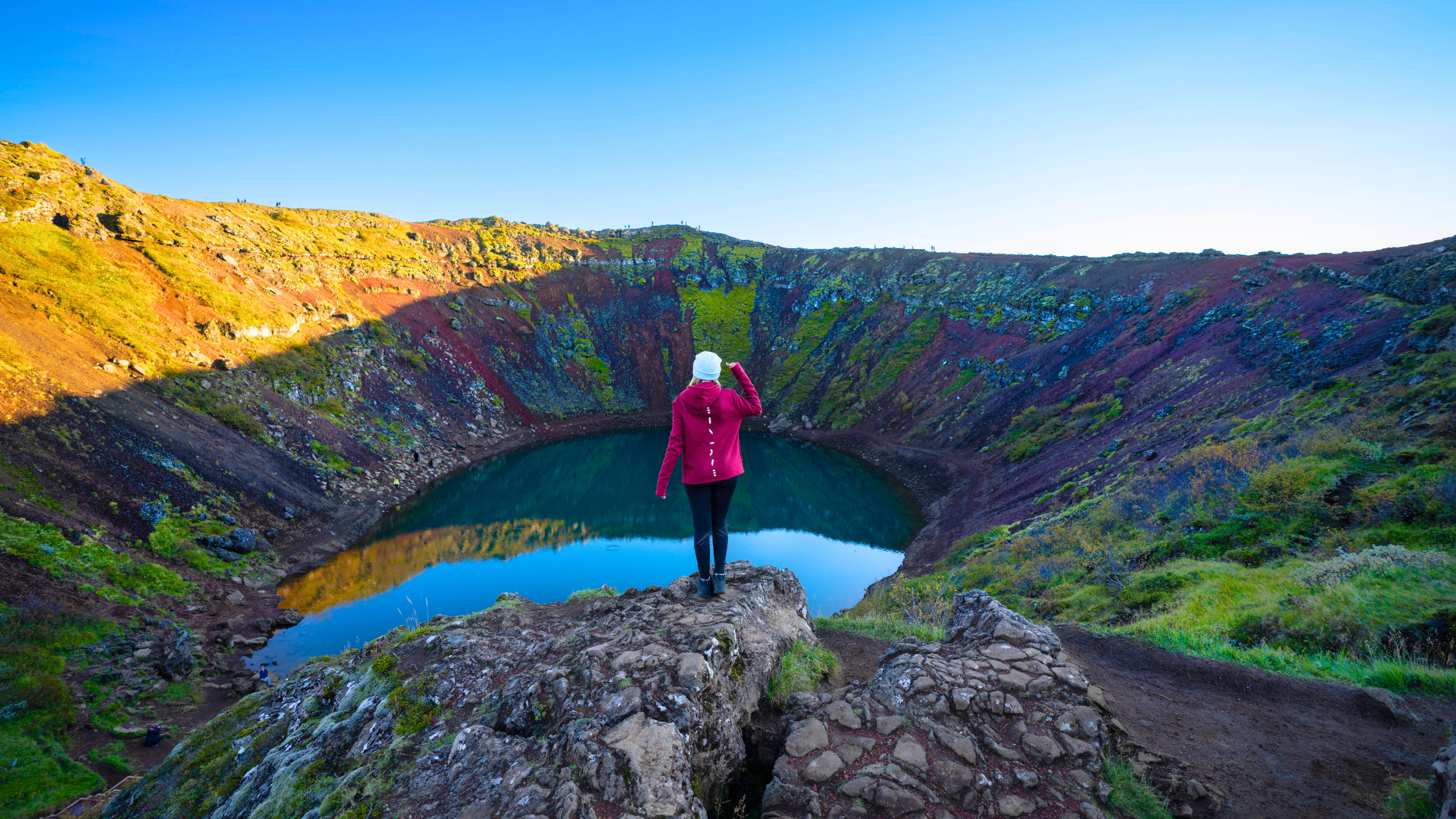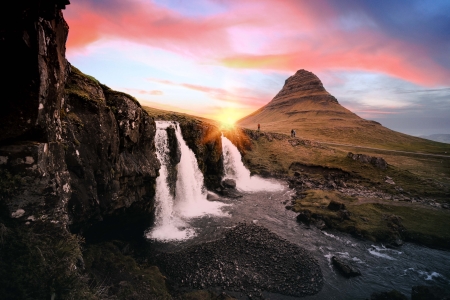Explore Iceland's Famous National Parks in Autumn
%20(2).png)
Explore Iceland's national parks this autumn and witness the iconic landmarks that have earned it the title, ‘Land of Fire and Ice.’ The parks are brimming with natural wonders, from volcanoes and glaciers to geothermal hot springs.
Dive into our guide to uncover the best spots, their significance, and tips for an unforgettable Icelandic adventure.
Element-rich National Parks of Iceland
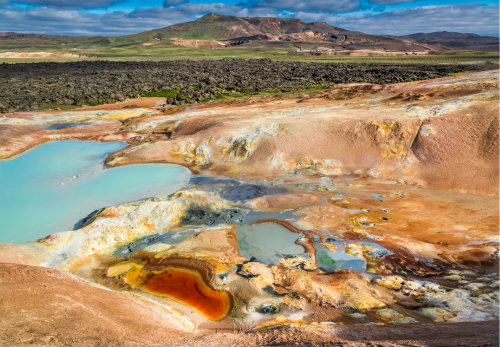
Get ready for a world of magnificence in Iceland
Many fine assets call Iceland home, and its National parks are among them. Located on the Golden Circle Route, South Coast, and Snaefellnes Peninsula, the national parks of Iceland are equally spread out and display distinctive and protected mesmerizing elements.
Amongst these elements stand Iceland's ancient history, folklore, culture, and heritage—an overwhelming example of the beauty and richness one country can offer.
Free for all to explore and with various services to assist your autumn getaway, each destination offers excellent adventures in Iceland. Find information centers, dedicated park rangers, camping grounds, hotels, restaurants, and cafes, all closely dotted by each national park and its neighboring fishing villages.
See more ways of discovering the beauty of Iceland in our fascinating blog to learn more.
Þingvellir (Thingvellir) National Park
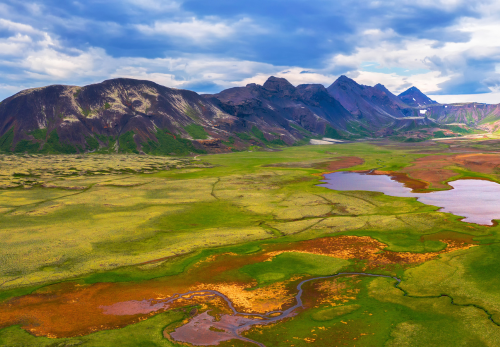
Þingvellir National Park is a must-see!
As one of Iceland's most important historical and geographical sites and labeled as a UNESCO World Heritage Site, Þingvellir was founded in 930 CE and has been significant in Iceland's historic lifespan. Known today as one of the longest-serving parliaments in the world, it was at this precise location that many revolutionary decisions were made regarding the country's fate.
Boasting a unique location in a volcanic rift valley, it is one of the only places in Europe to witness the divide between the North American and Eurasian tectonic plates. Also, its geological location is one of the most breathtaking landscapes in Iceland. Surrounded by mountains on three sides, cracks and ridges formed from volcanic activity, smooth waterfalls, Lake Þingvallavatn at its southern end, and the mesmerizing freshwater Silfra - it is a historical paradise where you can truly feel where Iceland began.
The national park is also home to one of Iceland's first churches: Thingvallakirkja. The church has since been restored as a replica from 1859 to symbolize the once original in its place.
Snæfellsjökull National Park
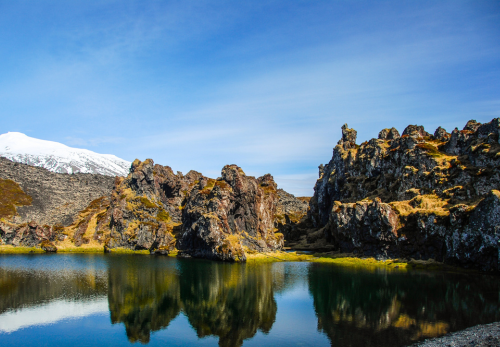
Enjoy breathtaking views from all viewpoints in Snæfellsjökull
The beautiful Snæfellsjökull National Park covers the western tip of the Snæfellsnes Peninsula in Western Iceland. As the first national park to technically stretch from the top of its famous mountain all across the ocean's coastline, its fascinating landmass achieves around 170 km2.
The protected and unspoiled national park includes many talked-about sites, including the magnificent Snæfellsjökull Glacier resting peacefully at the top of Mount Snæfellsjökull; Djúpalónssandur black pebble beach; Saxhóll volcano crater rising 109 meters above sea level; Lóndrangar rock pinnacles rising above and outside the coastline; Sönghellir, otherwise known as the ‘singing cave’ for its acoustic resonance and folklore emphasized Rauðfeldargjá, a beautiful gorge and the hidden waterfall.
Dramatic Mount Snæfellsjökull, the national park's star attraction, is an active volcano embedded in a landscape of moss-covered lava fields, craters, caves, and black sand beaches. The 1,500m grand mountain has been a source for folklore tales and represents locals' beliefs of a more spiritual and mystical side of Iceland. It is even believed that Iceland’s elvish hidden folk (Huldufólk) call it home. Those who visit claim they feel its spiritual essence upon arrival.
Did you know that Snæfellsjökull became world-famous after Jules Verne described it in his book “A Journey to the Centre of the Earth” as the journey's starting point?
Vatnajökull National Park
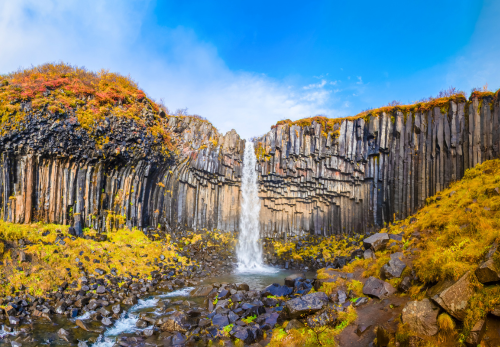
Visit Vatnajökull and its impressive glaciers and glacier lagoons
Vatnajökull National Park encompasses Europe’s largest glacier, Vatnajökull, and extensive surrounding areas. At 12,000 km2 and since 2008, these include the national parks previously known as Skaftafell in the southwest and Jökulsárgljúfur in the north.
The large Vatnajökull Region possesses a number of breathtaking natural masterpieces that cannot be missed. From roaring waterfalls to beautiful glacial streams and rivers, wet wildlife expanses and pristine wilderness areas, and unique geological formations to seek solitude in the northern and the eastern regions.
Towards the southern and western areas, you can welcome majestic mountain ridges, volcanic areas consistently reshaped by earthquakes and geothermal activity; you can find the highest freestanding mountain in Iceland, Hvannadalshnúkur; witness glorious black sand beaches and explore astonishing glacial landmass.
An endless list of exceptional discoveries lies waiting in autumn. Picturesque waterfalls such as Svartifoss, Dettifoss, and Godafoss, Jökulsárlón glacial lagoon, Myvatn lake, nature baths, Eyjafjallajökull icecap, Hvannadalshnúkur mountain, and Krafla volcano are among the most significant names you can witness.
Geological discoveries
Witnessing geological excellence such as that in Iceland is a wonderful experience.
Visit our All you need to know about Iceland blog for more exceptional information about our mind-blowing destination, and sign up for our email newsletter to receive all the latest news and updates regarding our hand-picked adventurous itineraries.
Happy Icelandic travels!
/BookNordics_Logo_CMYK_A_Po.jpg?width=450&height=155&name=BookNordics_Logo_CMYK_A_Po.jpg)



